Items filtered by date: April 2024
Causes of Foot Stress Fractures
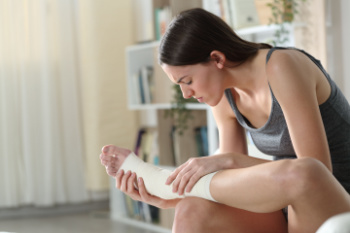
Stress fractures typically occur when there is a rapid increase in activity level or time spent on your feet. Your bones are resilient, constantly adapting to changes through a process called remodeling. However, when this adaptation is rushed, such as with sudden increases in activity, the balance between bone destruction and rebuilding is disturbed. This leaves your bones fragile and susceptible to stress fractures. Conditions like osteoporosis as well as high-impact sports may increase the risk of stress fractures. Foot structure variations like high or flat arches and wearing inadequate footwear can also contribute to heightened stress fracture risk. Symptoms of foot stress fractures include swelling, bruising, tenderness, and activity-related pain that diminishes with rest. Ignoring a foot stress fracture can make the injury worse and potentially lead to more severe consequences. If you believe you may have a foot stress fracture, it is suggested that you schedule an appointment with a podiatrist.
Stress fractures occur when there is a tiny crack within a bone. To learn more, contact James P. Huish, DPM from Arizona. Our doctor can provide the care you need to keep you pain free and on your feet.
How Are They Caused?
Stress fractures are the result of repetitive force being placed on the bone. Since the lower leg and feet often carry most of the body’s weight, stress fractures are likely to occur in these areas. If you rush into a new exercise, you are more likely to develop a stress fracture since you are starting too much, too soon. Pain resulting from stress fractures may go unnoticed at first, however it may start to worsen over time.
Risk Factors
- Gender – They are more commonly found in women compared to men.
- Foot Problems – People with unusual arches in their feet are more likely to develop stress fractures.
- Certain Sports – Dancers, gymnasts, tennis players, runners, and basketball players are more likely to develop stress fractures.
- Lack of Nutrients – A lack of vitamin D and calcium may weaken the bones and make you more prone to stress fractures
- Weak Bones – Osteoporosis can weaken the bones therefore resulting in stress fractures
Stress fractures do not always heal properly, so it is important that you seek help from a podiatrist if you suspect you may have one. Ignoring your stress fracture may cause it to worsen, and you may develop chronic pain as well as additional fractures.
If you have any questions, please feel free to contact our office located in Safford, AZ . We offer the newest diagnostic and treatment technologies for all your foot care needs.
Dangers of Falls Among Seniors
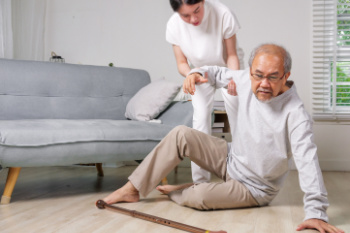
As you age, the risk of falls becomes a serious concern. Statistics reveal that more than one-fourth of older adults experience a fall each year. Many falls go unreported to doctors despite the doubled chances of falling again after the first incident. Falls often result in severe consequences, such as broken bones or head injuries that may compromise physical health and reduce independence. Contributing factors to falling include foot pain or wearing poorly fitting footwear. Additionally, lower body weakness, vision problems, and medication side effects can contribute to the risk of falls in older adults. To help prevent falls, seniors are encouraged to schedule appointments with a podiatrist to assess foot health, footwear, and gait abnormalities. Engaging in regular strength and balance exercises can help by improving stability and reducing fall risk. Regular eye exams and updating eyeglasses as needed can enhance visual clarity, especially for outdoor activities. Making the home environment safer by eliminating trip hazards, installing grab bars in bathrooms, and ensuring adequate lighting is also important in fall prevention. If you have injured your feet during a fall, it is suggested that you schedule an appointment with a podiatrist.
Preventing falls among the elderly is very important. If you are older and have fallen or fear that you are prone to falling, consult with James P. Huish, DPM from Arizona. Our doctor will assess your condition and provide you with quality advice and care.
Every 11 seconds, an elderly American is being treated in an emergency room for a fall related injury. Falls are the leading cause of head and hip injuries for those 65 and older. Due to decreases in strength, balance, senses, and lack of awareness, elderly persons are very susceptible to falling. Thankfully, there are a number of things older persons can do to prevent falls.
How to Prevent Falls
Some effective methods that older persons can do to prevent falls include:
- Enrolling in strength and balance exercise program to increase balance and strength
- Periodically having your sight and hearing checked
- Discuss any medications you have with a doctor to see if it increases the risk of falling
- Clearing the house of falling hazards and installing devices like grab bars and railings
- Utilizing a walker or cane
- Wearing shoes that provide good support and cushioning
- Talking to family members about falling and increasing awareness
Falling can be a traumatic and embarrassing experience for elderly persons; this can make them less willing to leave the house, and less willing to talk to someone about their fears of falling. Doing such things, however, will increase the likelihood of tripping or losing one’s balance. Knowing the causes of falling and how to prevent them is the best way to mitigate the risk of serious injury.
If you have any questions, please feel free to contact our office located in Safford, AZ . We offer the newest diagnostic and treatment technologies for all your foot care needs.
Wearing Improper Footwear Can Harm the Feet
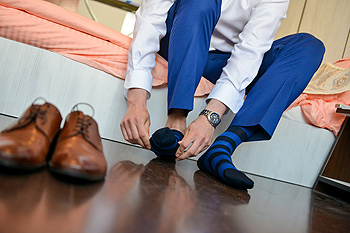
Your choice of footwear is more than just a fashion statement. Footwear significantly impacts the health of your feet. Whether you are navigating hard surfaces or engaging in physical activities, the shoes you wear can make a difference. For concrete or other hard surfaces, wearing supportive shoes with softer soles and arch support are essential to minimize foot pain and prevent issues like calluses and corns. Lace-up boots can offer relief by maintaining leg alignment, although they may limit ankle mobility. However, high heels can cause significant physical stress, altering foot position and posture and potentially lead to long-term damage. Sports enthusiasts should prioritize shoes with adequate cushioning and stability to prevent injuries. Custom-made orthotics tailored to your foot's unique needs can help to address specific issues and prevent further injury. Regularly alternating and replacing your shoes can vary foot posture and decrease the risk of injury. If you are experiencing foot problems or need guidance on proper footwear choices, it is suggested that you schedule an appointment with a podiatrist for an exam, diagnosis, and treatment plan.
Everyday foot care is very important to prevent infection and other foot ailments. If you need your feet checked, contact James P. Huish, DPM from Arizona. Our doctor can provide the care you need to keep you pain-free and on your feet.
Everyday Foot Care
Often, people take care of their bodies, face and hair more so than they do for their feet. But the feet are a very important aspect of our bodies, and one that we should pay more attention to. Without our feet, we would not be able to perform most daily tasks.
It is best to check your feet regularly to make sure there are no new bruises or cuts that you may not have noticed before. For dry feet, moisturizer can easily be a remedy and can be applied as often as necessary to the affected areas. Wearing shoes that fit well can also help you maintain good foot health, as well as making it easier to walk and do daily activities without the stress or pain of ill-fitting shoes, high heels, or even flip flops. Wearing clean socks with closed shoes is important to ensure that sweat and bacteria do not accumulate within the shoe. Clean socks help to prevent Athlete’s foot, fungi problems, bad odors, and can absorb sweat.
If you have any questions please feel free to contact our office located in Safford, AZ . We offer the newest diagnostic and treatment technologies for all your foot and ankle needs.
Healing Time for a Broken Toe
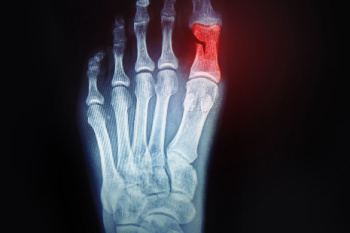
A broken toe, often caused by accidents like dropping heavy objects on it or colliding with furniture, can result in significant discomfort and affect daily activities. Typically, treatment involves immobilizing the toe by taping it to an adjacent one. In more severe cases, casting or surgery may be required, especially if multiple toes or the big toe are affected. The average healing time for a broken toe ranges from six to eight weeks, but several factors can influence this duration. The extent of the injury, the number of joints involved, and any accompanying damage, such as ligament injuries, all play a role in the recovery timeline. Upon seeking medical attention from a podiatrist, an X-ray is generally conducted to assess the severity of the fracture and guide treatment decisions. For hairline fractures, rest and limited weight-bearing suffice, while splinting may be necessary for more severe cases. The use of crutches may be prescribed to alleviate pressure on the foot. If healing progresses slowly or complications arise, it is suggested that you schedule an appointment with a podiatrist for further evaluation and specialized care.
Broken toes may cause a lot of pain and should be treated as soon as possible. If you have any concerns about your feet, contact James P. Huish, DPM from Arizona. Our doctor will treat your foot and ankle needs.
What Is a Broken Toe?
A broken toe occurs when one or more of the toe bones of the foot are broken after an injury. Injuries such as stubbing your toe or dropping a heavy object on it may cause a toe fracture.
Symptoms of a Broken Toe
- Swelling
- Pain (with/without wearing shoes)
- Stiffness
- Nail Injury
Although the injured toe should be monitored daily, it is especially important to have a podiatrist look at your toe if you have severe symptoms. Some of these symptoms include worsening or new pain that is not relieved with medication, sores, redness, or open wounds near the toe.
If you have any questions, please feel free to contact our office located in Safford, AZ . We offer the newest diagnostic and treatment technologies for all your foot care needs.
Do Your Child's Feet Hurt?
Exercises to Strengthen the Ankles
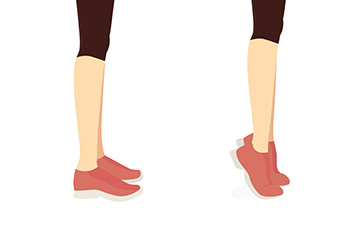
Strengthening your ankle ligaments is essential for preventing sprains and enhancing stability, especially if you are active in sports or physical activities. Simple ankle exercises include pointing and flexing your toes and performing heel raises while focusing on controlled movements. Other simple, but effective, ankle strengthening exercises include partial knee squats, either against a wall or with a chair for support, and incorporating stair climbing into your workout routine. These exercises help build strength and stability in your ankles, reducing the risk of sprains and enhancing overall mobility. However, it is suggested that you consult with a podiatrist before starting any ankle exercise regimen, particularly if you have existing ankle joint issues or are experiencing ankle pain. For personalized exercise recommendations and treatments to address your ankle instability or weakness, it is suggested that you schedule an appointment with a podiatrist.
Exercising your feet regularly with the proper foot wear is a great way to prevent injuries and build strength. If you have any concerns about your feet, contact James P. Huish, DPM from Arizona. Our doctor can provide the care you need to keep you pain-free and on your feet.
Exercise for Your Feet
Exercise for your feet can help you gain strength, mobility and flexibility in your feet. They say that strengthening your feet can be just as rewarding as strengthening another part of the body. Your feet are very important, and we often forget about them in our daily tasks. But it is because of our feet that are we able to get going and do what we need to. For those of us fortunate enough to not have any foot problems, it is an important gesture to take care of them to ensure good health in the long run.
Some foot health exercises can include ankle pumps, tip-toeing, toe rises, lifting off the floor doing reps and sets, and flexing the toes. It is best to speak with Our doctor to determine an appropriate regimen for your needs. Everyone’s needs and bodies are different, and the activities required to maintain strength in the feet vary from individual to individual.
Once you get into a routine of doing regular exercise, you may notice a difference in your feet and how strong they may become.
If you have any questions please feel free to contact our office located in Safford, AZ . We offer the newest diagnostic and treatment technologies for all your foot and ankle needs.

